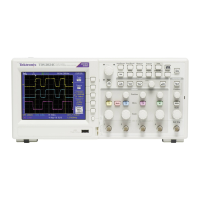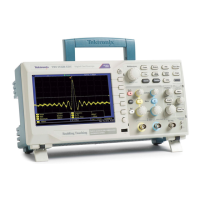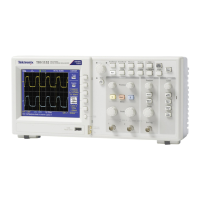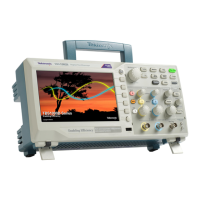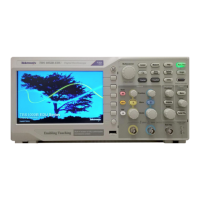Triggering on a specified pulse width
Use this procedure to set the oscilloscope to trigger on a specified signal pulse
condition. You can trigger when a pulse is less than, greater than, equal to, or not
equal to a set time period (width). The minimum pulse width setting is 1 ns. See
Available trigger types on page 42.
Pulse width triggering is most often used to troubleshoot or analyze digital
signals.
1. Push the Trigger Menu front-panel button.
2. Push the Type side-menu button.
3. Use the Multipurpose knob to select and click Pulse Width.
4. Push the Source side-menu button and use the Multipurpose knob to select
and click the channel to use as the trigger signal source.
5. Push the Polarity side-menu button and use the Multipurpose knob to select
and click the pulse polarity (positive or negative) to trigger on.
6. Push the Threshold side-menu button and use the Multipurpose knob to
select and click the trigger level entry method:
■
Click the threshold field and use the Multipurpose knob to manually set
the trigger level.
■
Click Choose Preset and use the Multipurpose knob to set the trigger
level to a predefined signal logic family level (TTL, CMOS, ECL, and so
on) or to 0.
■
Click Set to 50% to set the trigger level to 50% of the signal peak-to-
peak level.
Trigger setup
TBS1000C Series Oscilloscopes User Manual 59
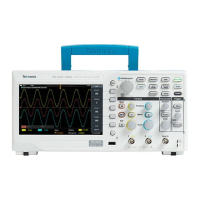
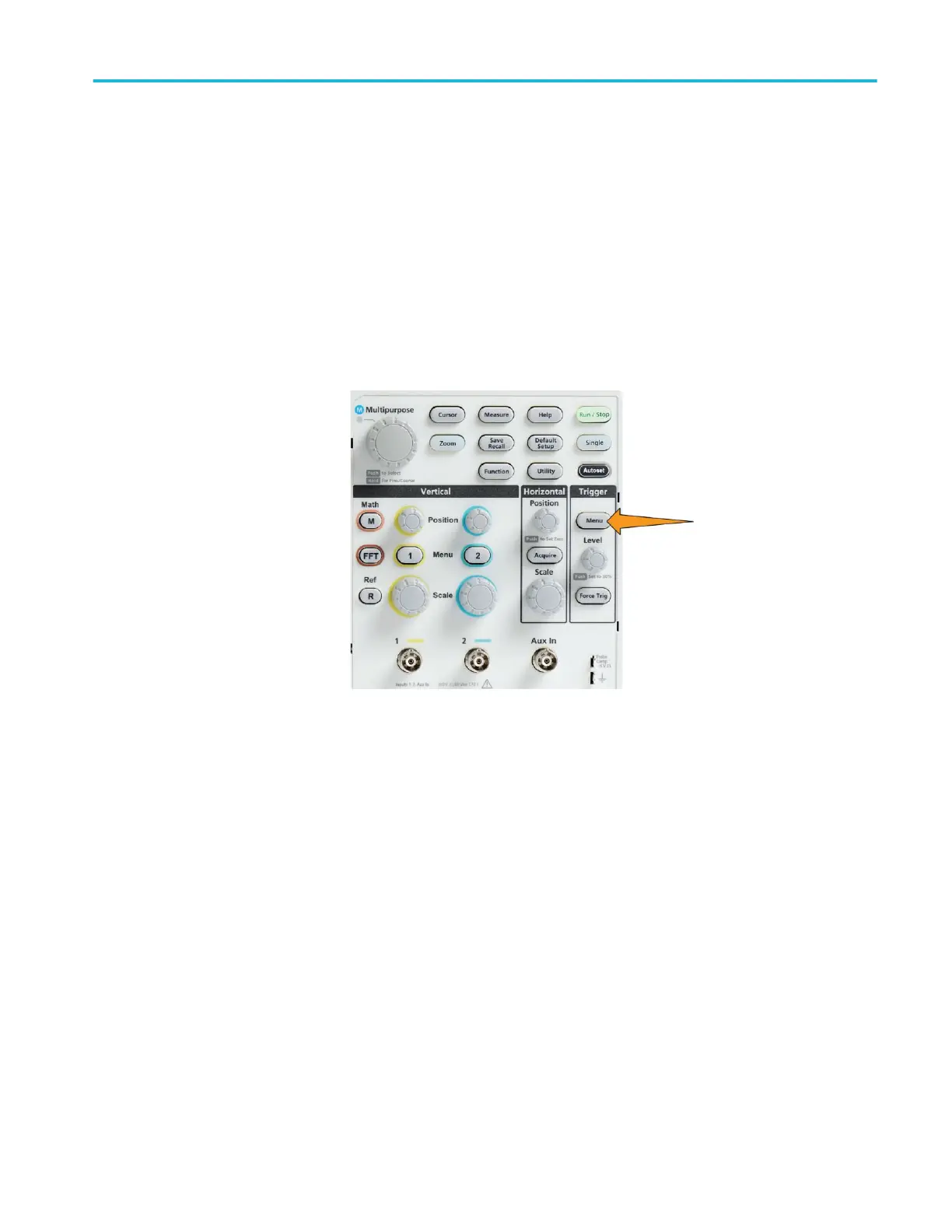